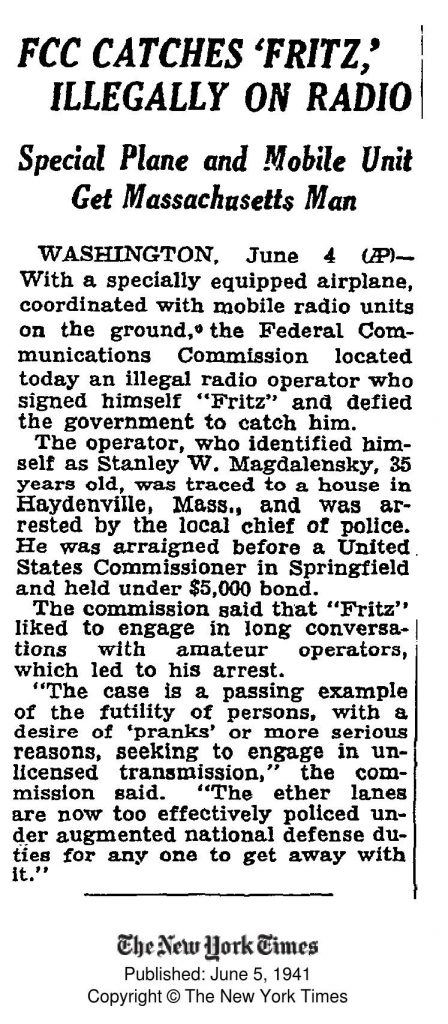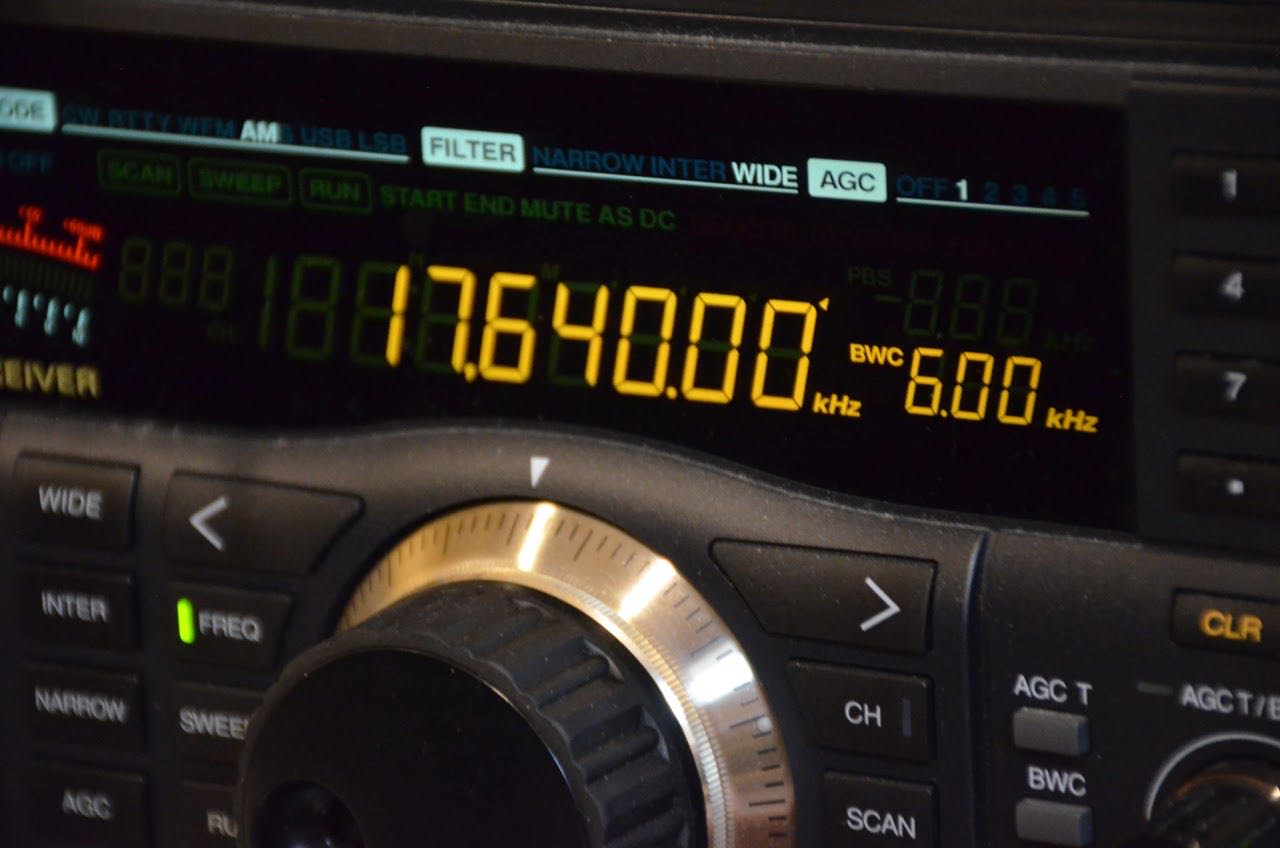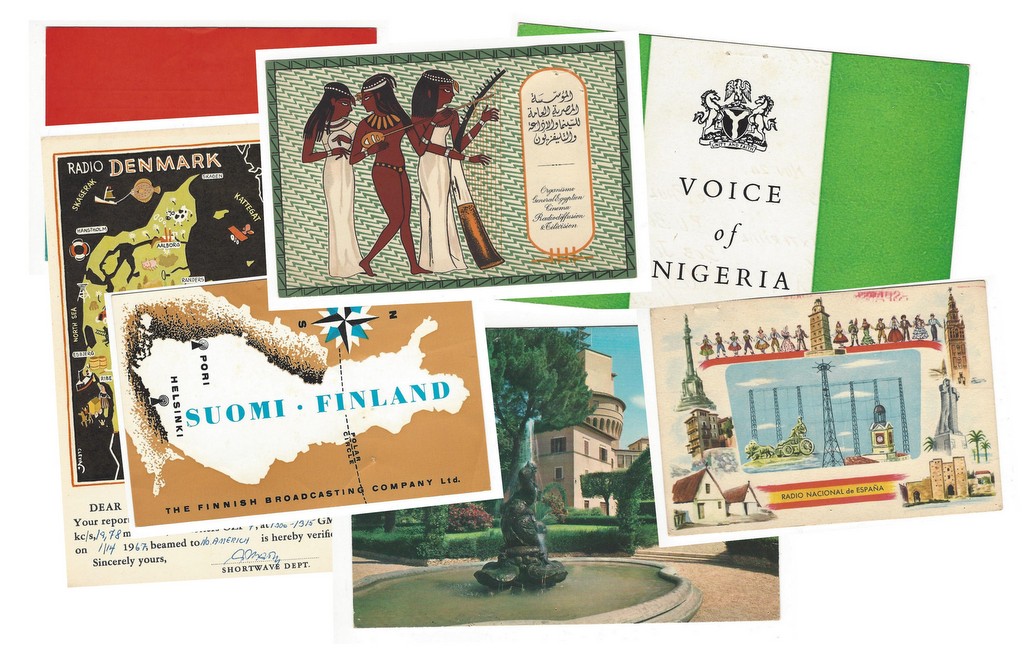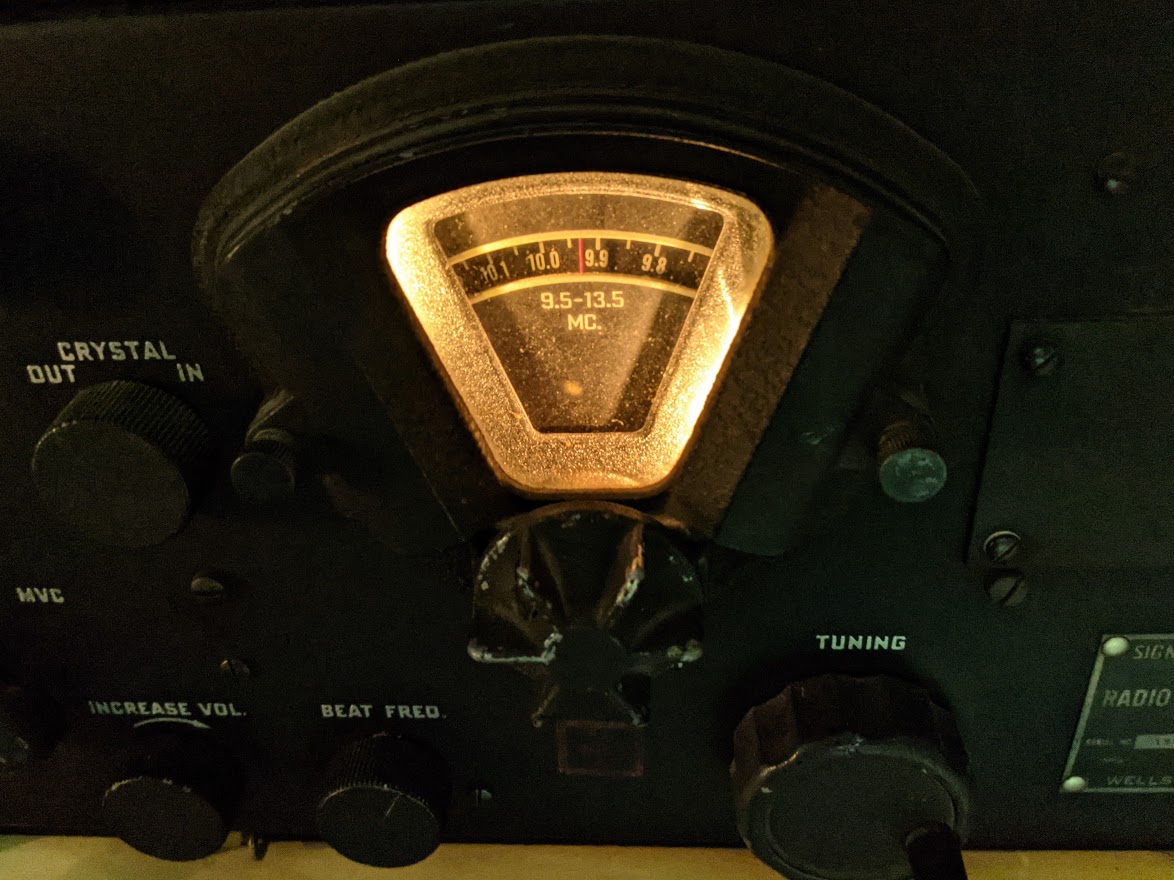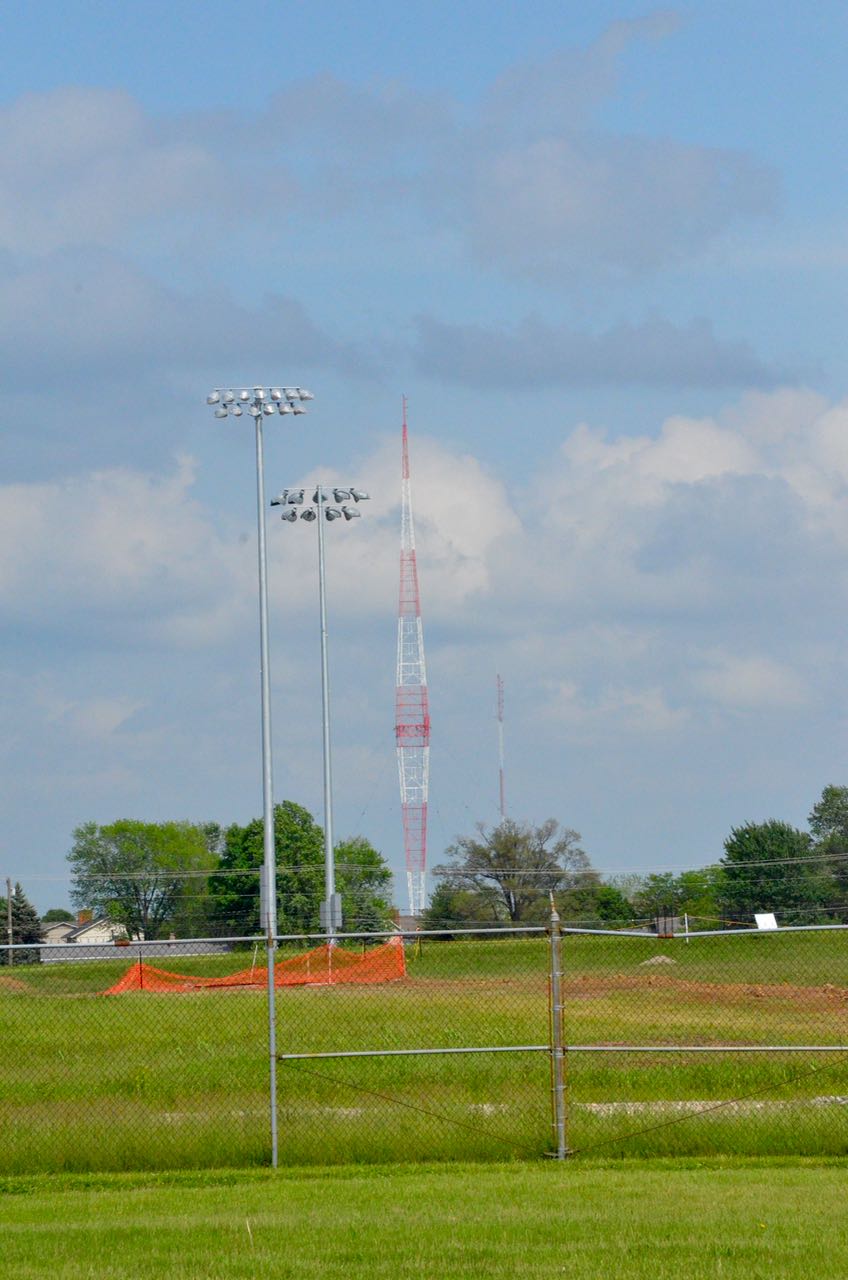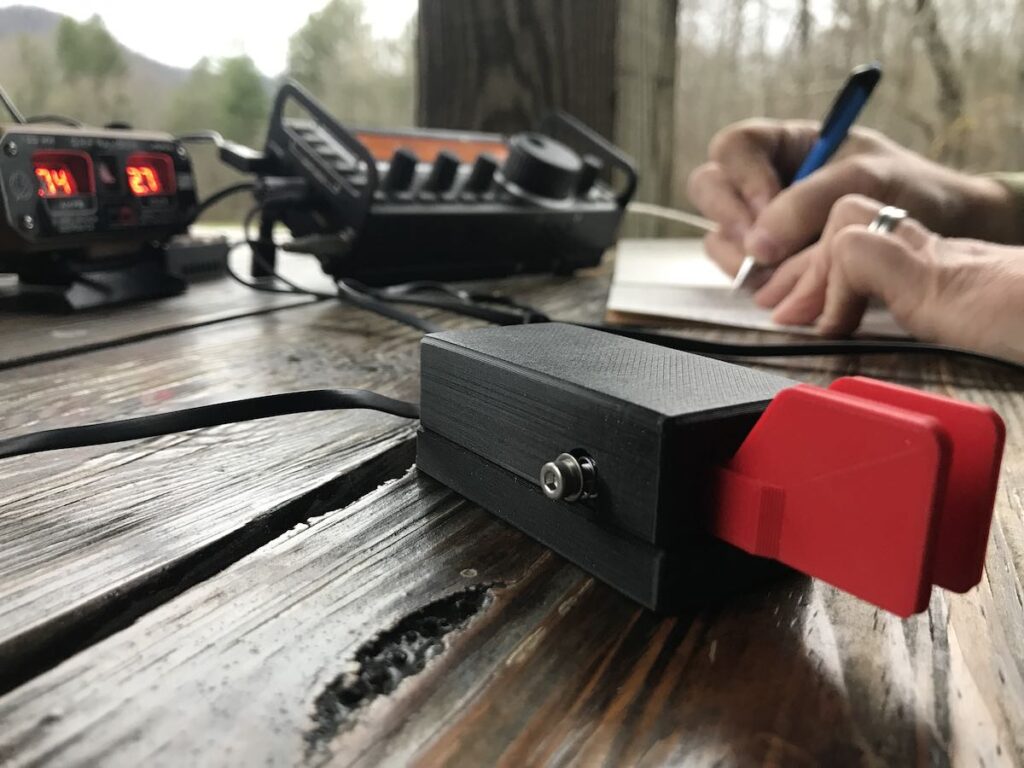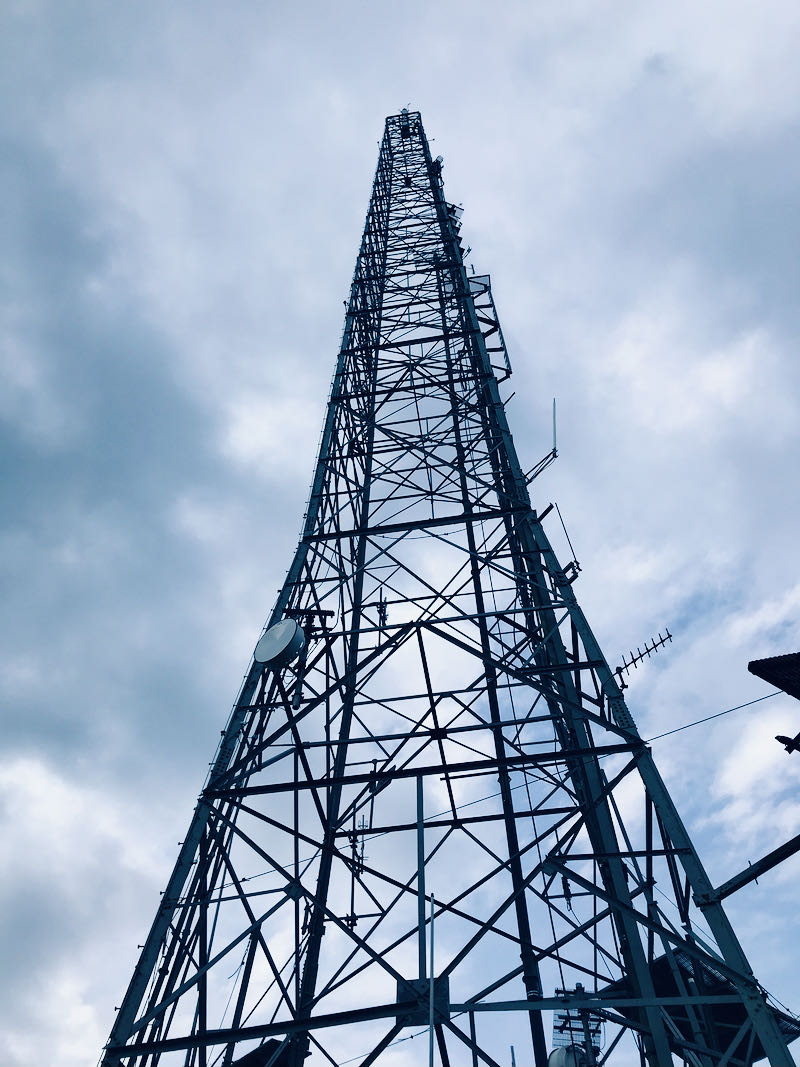Many thanks to SWLing Post contributor, David Goren, who shares this clipping from the New York Times archive:
Tag Archives: Radio History
Radio Waves: DRM Part of BBC Story, Antennas and Smith Charts, Shortwave “Hot Debate,” Carrington Event, and “Deep Freeze”
Radio Waves: Stories Making Waves in the World of Radio
Welcome to the SWLing Post’s Radio Waves, a collection of links to interesting stories making waves in the world of radio. Enjoy!
DRM Is Part of the BBC World Service Story (Radio World)
The iconic broadcaster has been supportive of the standard for over 20 years
The author is chairman of the DRM Consortium. Her commentaries appear regularly at radioworld.com.
Our old friend James Careless studiously ignores DRM once more in his well-researched, but to our minds incomplete article “BBC World Service Turns 90” in the March 30 issue.
As an ex-BBC senior manager, I would like to complete the story now that the hectic NAB Show is over.
Having lived through and experienced at close quarters the decision to reduce the BBC shortwave about 20 years ago, I can confirm that the BBC World Service decision to cut back on its shortwave footprint — especially in North America, where reliable, easy-to-receive daily broadcasts ceased — has generated much listener unhappiness over the years.
In hindsight, the decision was probably right, especially in view of the many rebroadcasting deals with public FM and medium-wave stations in the U.S. (and later other parts of the world like Africa and Europe) that would carry news and programs of interest to the wide public.
But BBC World Service in its long history never underestimated the great advantages of shortwave: wide coverage, excellent audio in some important and populous key BBC markets (like Nigeria) and the anonymity of shortwave, an essential attribute in countries with undemocratic regimes.
BBC World Service still enjoys today about 40 million listeners worldwide nowadays. [Continue reading…]
The Magic of Antennas (Nuts & Volts)
If you really want to know what makes any wireless application work, it is the antenna. Most people working with wireless — radio to those of you who prefer that term — tend to take antennas for granted. It is just something you have to add on to a wireless application at the last minute. Well, boy, do I have news for you. Without a good antenna, radio just doesn’t work too well. In this age of store/online-bought shortwave receivers, scanners, and amateur radio transceivers, your main job in getting your money’s worth out of these high-ticket purchases is to invest a little bit more and put up a really good antenna. In this article, I want to summarize some of the most common types and make you aware of what an antenna really is and how it works.
TRANSDUCER TO THE ETHER
In every wireless application, there is a transmitter and a receiver. They communicate via free space or what is often called the ether. At the transmitter, a radio signal is developed and then amplified to a specific power level. Then it is connected to an antenna. The antenna is the physical “thing” that converts the voltage from the transmitter into a radio signal. The radio signal is launched from the antenna toward the receiver.
A radio signal is the combination of a magnetic field and an electric field. Recall that a magnetic field is generated any time a current flows in a conductor. It is that invisible force field that can attract metal objects and cause compass needles to move. An electric field is another type of invisible force field that appears between conductors across which a voltage is applied. You have experienced an electric field if you have ever built up a charge by shuffling your feet across a carpet then touching something metal … zaaapp. A charged capacitor encloses an electric field between its plates.
Anyway, a radio wave is just a combination of the electric and magnetic fields at a right angle to one another. We call this an electromagnetic wave. This is what the antenna produces. It translates the voltage of the signal to be transmitted into these fields. The pair of fields are launched into space by the antenna, at which time they propagate at the speed of light through space (300,000,000 meters per second or about 186,000 miles per second). The two fields hang together and in effect, support and regenerate one another along the way. [Continue reading…]
Smith Chart Fundamentals (Nuts & Volts)
The Smith Chart is one of the most useful tools in radio communications, but it is often misunderstood. The purpose of this article is to introduce you to the basics of the Smith Chart. After reading this, you will have a better understanding of impedance matching and VSWR — common parameters in a radio station.
THE INVENTOR
The Smith Chart was invented by Phillip Smith, who was born in Lexington, MA on April 29, 1905. Smith attended Tufts College and was an active amateur radio operator with the callsign 1ANB. In 1928, he joined Bell Labs, where he became involved in the design of antennas for commercial AM broadcasting. Although Smith did a great deal of work with antennas, his expertise and passion focused on transmission lines. He relished the problem of matching the transmission line to the antenna; a component he considered matched the line to space. Continue reading
Video: “The Glory Days of Shortwave Radio”
Many thanks to SWLing Post contributor, Adi, who writes:
Hi Thomas, this video just popped for me on YouTube. I searched the SWLing Post and didn’t find it, it’s not new so maybe you missed it.
Thank you, Adi. I’m almost positive I’ve posted this one before–but if I have it’s been so long it should be re-posted! A wonderful nostalgia trip! Thanks for sharing.
Radio Waves: RNZ & TVNZ Merging, Tech Keeping Ukrainians in Touch, Solar Storms Documentary, and Aspidistra
Radio Waves: Stories Making Waves in the World of Radio
Because I keep my ear to the waves, as well as receive many tips from others who do the same, I find myself privy to radio-related stories that might interest SWLing Post readers. To that end: Welcome to the SWLing Post’s Radio Waves, a collection of links to interesting stories making waves in the world of radio. Enjoy!
RNZ and TVNZ to merge (RadioInfo)
New Zealand’s Minister for Broadcasting and Media Kris Faafoi has announced the government’s decision to create a new public media entity by merging RNZ and TVNZ.
According to Faafoi, ensuring New Zealanders continue to have access to reliable, trusted, independent information and local content sits at the heart of the decision.
“The public media sector is extremely important to New Zealanders in providing them with high quality, independent, timely and relevant media content,” Faafoi said.
“But we know the media landscape is changing and the sector is having to adapt to increased competition, changing audience demands and ways of accessing media, falling revenue, and new and emerging digital platforms. We need public media which is responsive to these changes and can flourish.
“RNZ and TVNZ are each trying to adjust to the challenges, but our current public media system, and the legislation it’s based on, is focused on radio and television.
“New Zealanders are among some of the most adaptive audiences when it comes to accessing content in different ways; like their phones rather than television and radio, and from internet-based platforms. We must be sure our public media can adapt to those audience changes, as well as other challenges that media will face in the future.”
“The new public media entity will be built on the best of both RNZ and TVNZ, which will initially become subsidiaries of the new organisation. It will continue to provide what existing audiences value, such as RNZ Concert, as well as better reaching those groups who aren’t currently well served; such as our various ethnic communities and cultures,” Faafoi said[…]
Read more at: https://radioinfo.com.au/news/rnz-and-tvnz-to-merge/ © RadioInfo Australia
Technologies old and new keep Ukrainians in touch with the world (The Economist)
Battery radios and satellite internet both have jobs to do
In communist Eastern Europe a shortwave radio was a vital piece of equipment for anyone wanting to stay ahead of the censors. Stations such as the bbc World Service, Radio Free Europe and Voice of America broadcast news, entertainment and rock-and-roll across the Iron Curtain.
After the cold war ended, shortwave radios gave way to television and the internet, and the broadcasts were wound down. But on March 3rd, in the aftermath of Russia’s invasion of Ukraine, the bbc announced their return. The World Service has begun nightly news broadcasts into Ukraine and parts of Russia (see map). Continue reading
Video Presentation: WLW Radio -100 Years – Behind The Scenes by Dave Snyder
Many thanks to SWLing Post contributor, David Snyder, who shares this presentation outlining the history of WLW for the National VOA Museum of Broadcasting YouTube channel.
Video description:
Behind the scenes pictures from the efforts of Powel Crosley, Jr. creating the famous WLW Radio Station, including the largest USA AM broadcast transmitter at 500,000 watts.
Click here to view on YouTube.
Most excellent! Thank you for sharing this, David.
Radio Waves: Radio Atlantique, Car Radio History, BBC Norfolk Features CW, and IC-R30 Firmware Update
Radio Waves: Stories Making Waves in the World of Radio
Because I keep my ear to the waves, as well as receive many tips from others who do the same, I find myself privy to radio-related stories that might interest SWLing Post readers. To that end: Welcome to the SWLing Post’s Radio Waves, a collection of links to interesting stories making waves in the world of radio. Enjoy!
Many thanks to SWLing Post contributors Trevor, Dennis Dura, and Markku Koskinen for the following tips:
Radio Atlantique Broadcasts Against All Odds (Red Tech)
Its broadcasting territory is restricted and unlikely to grow significantly, and for good reason. Since 1982, Radio Atlantique has been broadcasting in the heart of the French overseas territory of Saint-Pierre-et-Miquelon, a 252 square kilometers, self-governing Atlantic clump of islands just off the south coast of the Canadian province of Newfoundland. The radio station has cultivated its uniqueness, becoming a key partner in the local life and cohesion of the 6,000 or so Miquelonnais. However, this state of mind has not prevented the project from going through difficult times and bringing uncertainties to its future.
Broadcasting in the territory of Saint-Pierre-et-Miquelon is an extraordinary adventure every day. For example, coverage of the entire archipelago was only concluded in 2010 with effective broadcasting in Miquelon, only 18 nautical miles away from the main island. This challenge for the station has only reinforced its unique place within the islands’ society. The population on the islands is highly mixed, and the vast majority of the inhabitants have French and Basque origins. [Continue reading…]
The history of car radios, from AM to Apple (The Globe and Mail)
“Hey, Google. Play Toosie Slide by Drake.”
Within seconds, the Toronto pop singer’s silky voice wafts from the speakers of the ELS Studio audio system of my Acura MDX. Ten speakers in the cabin pump out trilling highs and chest-thumping bass, transforming my vehicle into a soothing audio studio on wheels. Bored, I flip over to SiriusXM for a little Hip-Hop Nation.
Modern car audio systems are so highly evolved, so seamless and so intuitive, it’s easy to forget that it wasn’t always this way. But it’s been 90 years since the first mass-produced car radio appeared, and the road to audio perfection has been a bumpy one indeed.
Michael Lamm remembers. At 84, the California-based auto historian’s car-ownership experience spans back to the early 1950s, when staticky car radios were powered by primitive vacuum tubes.
When he was growing up in Texas, he says he “didn’t really care that much about radio,” in part because programming was so limited. “I didn’t listen to the preachers who were constantly haranguing everybody.” [Continue reading…]
BBC Norfolk features ham radio Morse code (Southgate ARC)
January 11 was Learn your Name in Morse Code Day and Roger Cooke G3LDI was interviewed on BBC Norfolk by Chris Goreham about Morse
Roger has been a keen proponent of the advantages of Morse code since he started teaching it as a teenager when he was first licenced in 1956.
You can listen to the interview by fast-forwarding to 1:54:27 in this recording
https://www.bbc.co.uk/sounds/play/p0bcktml
Free Morse training courses are available Online, see
New Icom IC-R30 Firmware Update (via Markku Koskinen)
Updated Icom IC-R30 firmware has been posted on the Icom Japan web site.
Battery health status (Normal/Caution/Warning) judgment has been improved.
Click here to check it out and download at Icom Japan.
Do you enjoy the SWLing Post?
Please consider supporting us via Patreon or our Coffee Fund!
Your support makes articles like this one possible. Thank you!
Radio Waves: The Barbed Wire Comms Line, FCC Denies AM Appeal, Raspberry Pi Radio Astronomy, and Interview with Dick Smith
Radio Waves: Stories Making Waves in the World of Radio
Because I keep my ear to the waves, as well as receive many tips from others who do the same, I find myself privy to radio-related stories that might interest SWLing Post readers. To that end: Welcome to the SWLing Post’s Radio Waves, a collection of links to interesting stories making waves in the world of radio. Enjoy!
Many thanks to SWLing Post contributors Paul, Dennis Dura, Dan Van Hoy, Alokesh Gupta, and the Southgate ARC for the following tips:
Atrocious but efficient: How ranchers used barbed wire to make phone calls (Texas Standard)
A barbed wire telephone call didn’t sound great but could quickly warn others about something such as a wildfire.
Historian J. Evetts Haley wrote that, in its time, the old XIT Ranch up in the Texas Panhandle was “probably the largest fenced range in the world.” He recalled that its barbed wire enclosed over 3 million acres of land. At the north end alone, the fence ran for 162 miles. The unique enclosure helped keep in enormous cattle herds, keep out rustlers, and also gave rise to the creative use of a new technology: the telephone.
I’ll come back to the XIT in a moment, but first, consider these smattering of reports from that era. In 1897, The Electrical Review, reported that “on a ranch in California, telephone communication had been established between the various camps . . . by means of barbed wire fences.” The article says the novel use of the phone was a great success and was being used in Texas as well. That same year, the New England Journal of Agriculture was impressed that two Kansas farmers, living a mile apart, had attached fine telephone instruments to the barbed wire fence that connects their places and established easy communication. From the Butte Intermountain in 1902 we see this notice: “Fort Benton’s latest development is a barbed wire telephone communication.” The article points out that people of the range were not all that happy with barbed wire, which they thought was an “evil” that had arrived with the railroad, but they had decided to look at the practical side of its existence and use it to create a telephone exchange that would connect all the ranches to Fort Benton. [Continue reading…]
FCC Says No to Appeal for a New AM in L.A. (Radio World)
Schwab Multimedia has lost an appeal to the Federal Communications Commission in a case involving a planned AM station near Los Angeles for which it had a construction permit.
This is a “tolling” case, one that involves the FCC construction clock. The history is complex — the FCC’s summary is 2,500 words long, not counting many extended footnotes — but the upshot is that KWIF in Culver City was never built and, barring further developments, apparently will not be. Its call sign has now been deleted.
Levine/Schwab Partnership, which does business as Schwab Multimedia, had applied in 2004 to build a new AM station in the Los Angeles area. It eventually secured a CP in 2016 for the station at 1500 kHz. [Continue reading at Radio World…]
Radio Astronomy with Raspberry Operating System (Glen Langston)
Check out this fascinating radio astronomy project by Glen Langston that is not only affordable, but quite accessible. Thank you for the tip, Paul!
This article is in PDF form and can be downloaded from with this link.
Dick Smith Live: Adventuring, Electronics & Amateur Radio (Ham Radio DX on YouTube)
Dick Smith, VK2DIK has lived an adventurous and extraordinary life. He is a proud Australian, businessman, adventurer, entrepreneur and he single handedly changed electronics and CB/Amateur Radio in Australia.
Dick has recently released his autobiography titled, Dick Smith: My Adventurous Life and tonight we’re privileged to sit down live with Dick, speaking to him about his adventures, including the first solo helicopter flight around the world, his business ventures and being a pioneer for Amateur and CB radio.
Do you enjoy the SWLing Post?
Please consider supporting us via Patreon or our Coffee Fund!
Your support makes articles like this one possible. Thank you!

